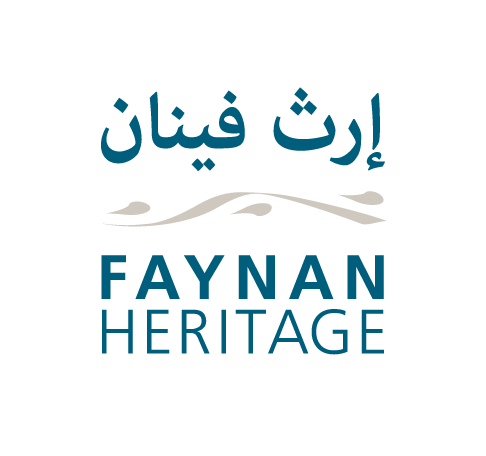The story of Faynan Museum
Faynan Museum was constructed by the Jordanian Department of Antiquities (DoA). The building was completed in 2016 but was an empty shell – the DoA had no plans as to what it might contain.
The DoA asked Dr Bill Finlayson, Dr Mohammad Najjar and Professor Steven Mithen to help. They had undertaken a long period of archaeological research in Faynan, working jointly on the excavation of the Neolithic site of WF16. Dr Najjar has been involved in many excavation projects in Faynan. The DoA invited Bill, Mohammad and Steve to develop the museum, although did not provide any resource. The DoA appointed Mr Ali Hasasen as museum curator.
Rather than just seeking to procure display cabinets and artefacts about a range of key sites, Bill, Mohammad, and Steve decided to emphasise how archaeology is found throughout the landscape. Steven Mithen, Professor of Archaeology at the University of Reading, UK, applied to the UK’s Arts & Humanities Research Council and secured a grant to fund the construction of the 3D model and associated wall displays (Award ‘Discovering WF16. AH/P005594/1). The aim to develop a resource that would attract more tourists to Faynan and encourage day visitors to stay for longer. By growing tourism, especially eco-tourism that engaged with local communities, income would be generated for local families to alleviate poverty and support sustainable development. Also, by increasing awareness about the archaeology within Faynan, greater protection might be afforded to monuments during the course making new fields and roads in Faynan.
The model was constructed in Somerset, UK, shipped to Jordan, and transported to Faynan. With help from colleagues and students, Steven and Bill re-constructed the model in the museum and installed the wall displays. Steve, Bill and Mohammad also wrote the first archaeological guide to Faynan which can be found here.
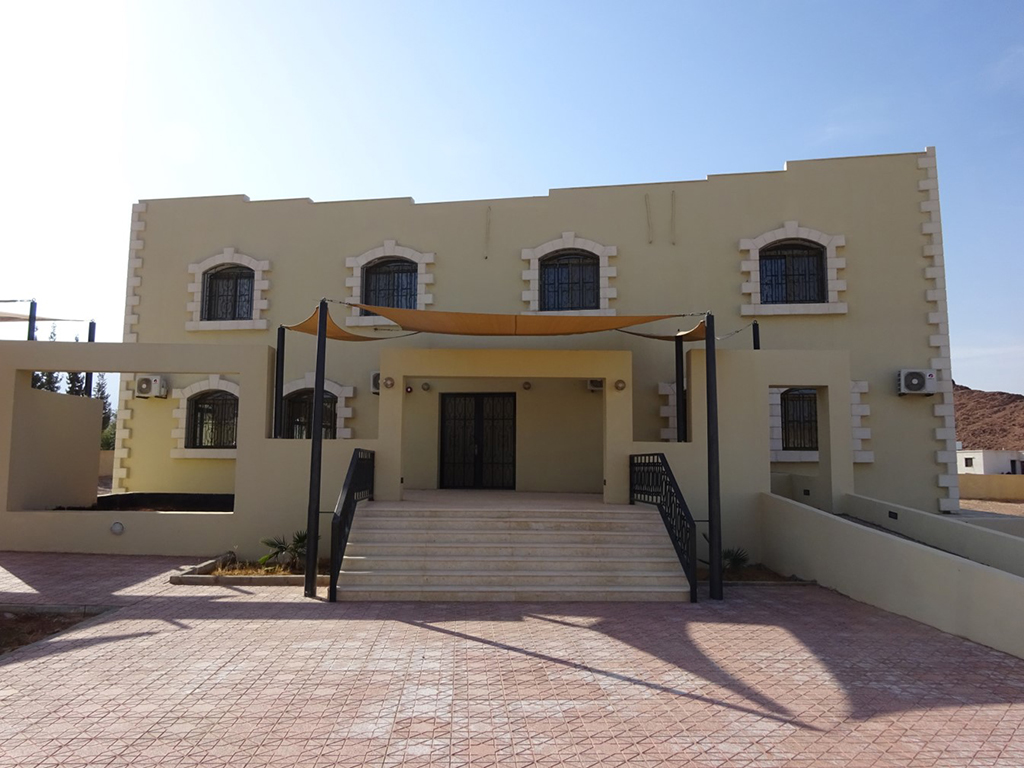
Faynan Museum

The empty shell of Faynan museum in 2016
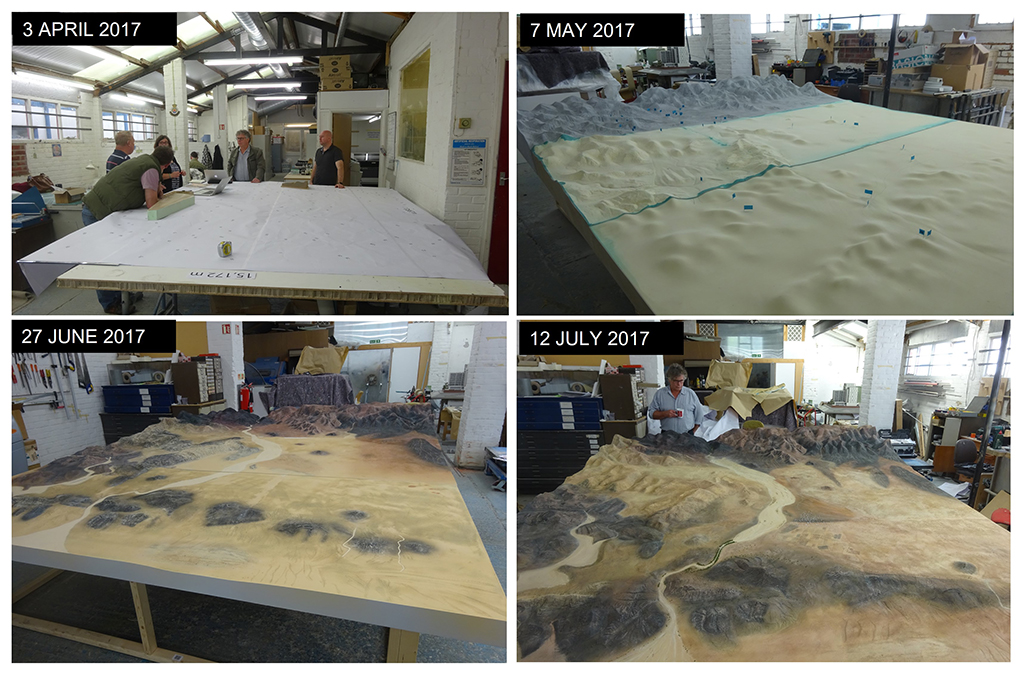
Designing and building the Faynan landscape model in the UK

Constructing the model in Faynan museum after it was shipped in parts to Jordan
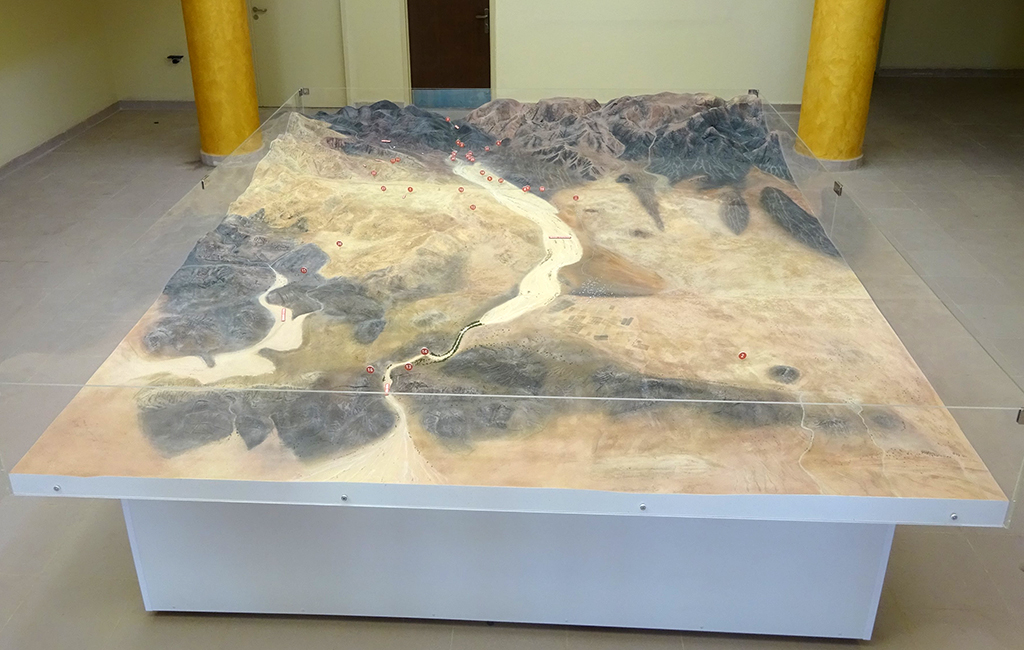
The finished model
Museum Opening
Her Excellency Lina Anaab, the Minister for Tourism and Antiquities, opened the Museum on 3 March 2017.

Her Excellency Lina Anaab, Minister of Tourism and Antiquities and Steven Mithen, opening the Museum

Guests at the opening event, waiting for speeches
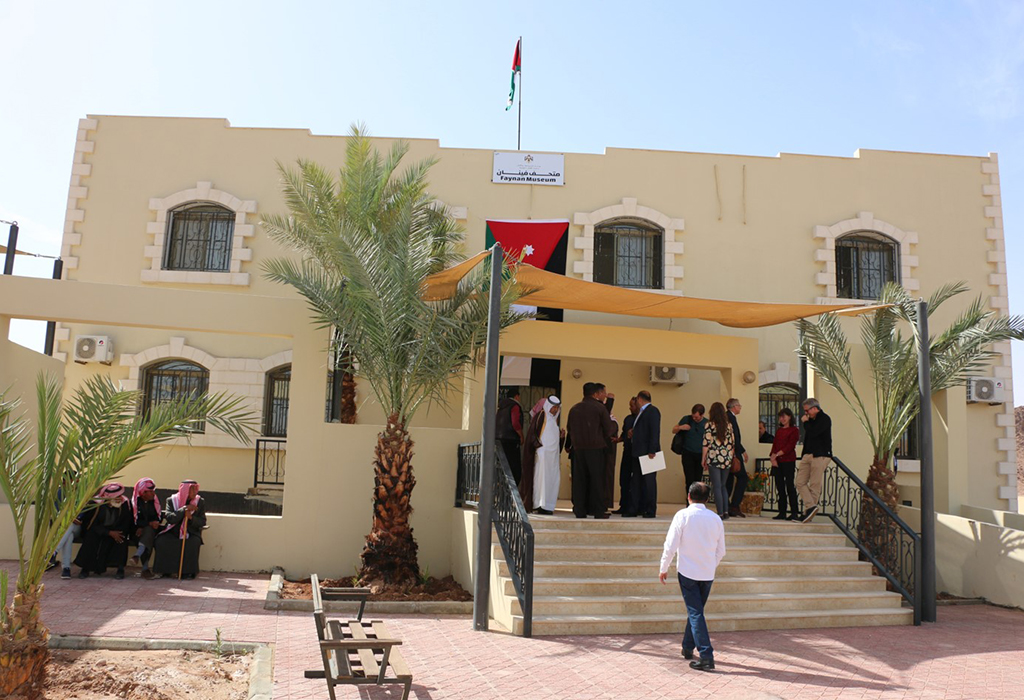
Faynan Museum on its opening day, 3 March 2017
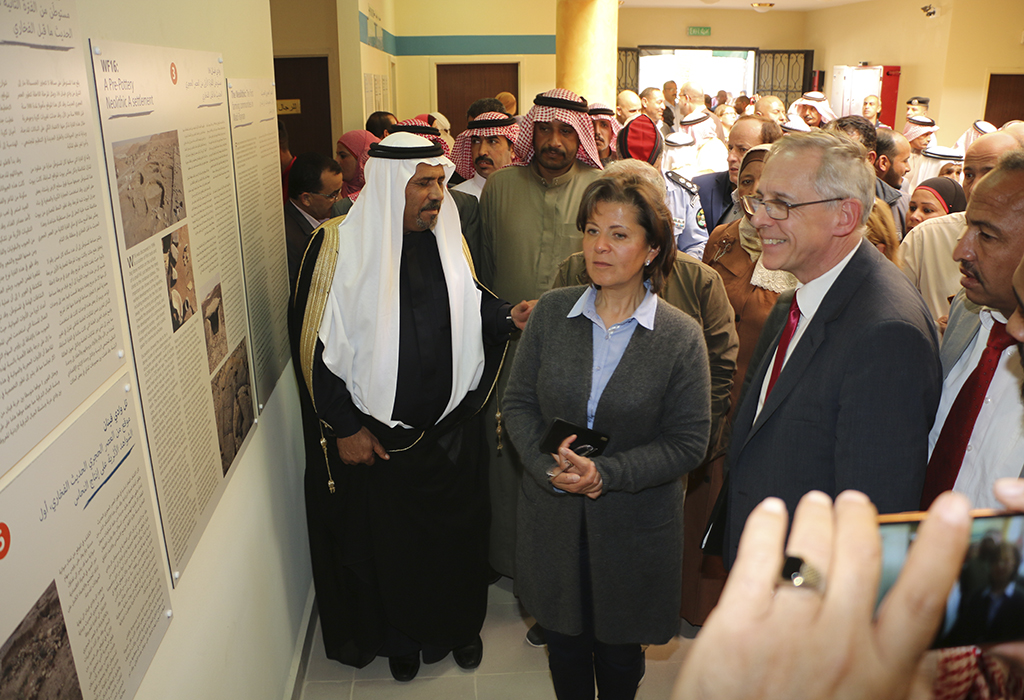
Steven Mithen showing the Minister the wall displays
Further development of the Museum
While the 3D model and wall displays were of interest to visitors and covered its long-term past, Steven thought that the museum should also represent more recent history of Faynan and contribute to the well-being of the local community of Gregera and Faynan. By further developing the museum displays, and connecting these with the landscape, additional encouragement would be provided to eco-tourism. An opportunity for this arose from the Newton-Khalidi Fund that invited projects that would support social and economic development in Jordan.
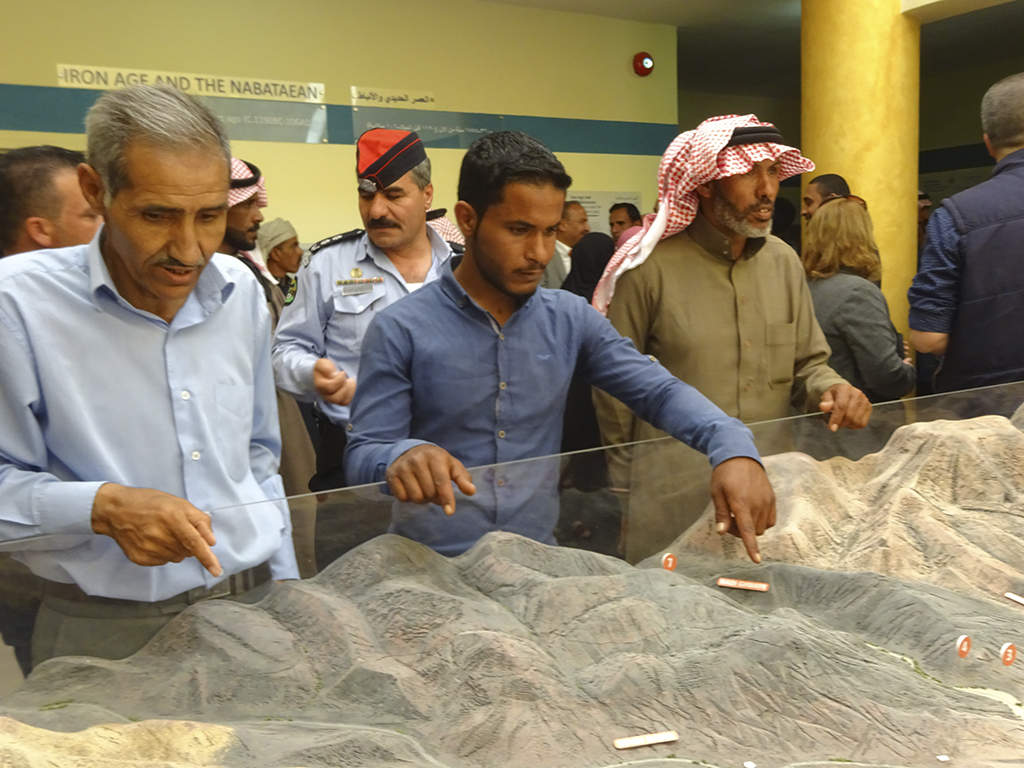
Members of the local community discovering the archaeological sites in Fayan
Our Future, Our Past, All Together in Faynan
With new colleagues from the Universities of Petra, Jordan, Leeds, and Queen Mary’s College, and in collaboration with the Council for British Research in the Levant (CBRL), funding was secured for a project called ‘Our Future, Our Past, All Together in Faynan’ – known as OPOF (Award: AH/S011633/1. This undertook six tasks.
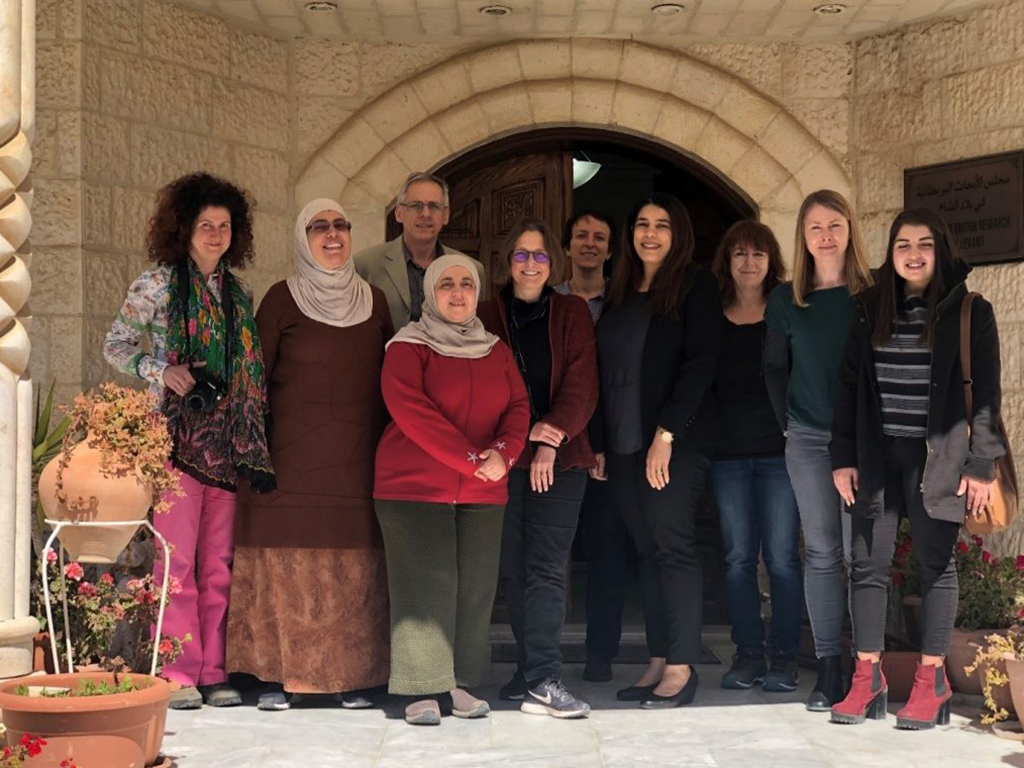
The OPOF Team: from left to right, Sarah Lambert Gates, University of Reading; Dr Fatima Al-Nammari, University of Petra; Professor Steven Mithen, University of Reading; Dr Fatima Marii, University of Jordan; Dr Carol Palmer, Council for British Research in the Levant; Dr Arwa Badran, University of Durham; Dr Gehan Selim, University of Leeds; Dr Jessica Jacobs, Queen Mary College; Elaine Jamieson, University of Reading; Nebras Maslamani, Council for British Research in the Levant
Faynan’s recent history
Dr Carol Palmer (CBRL) and Dr Fatma Marii (University of Jordan) prepared the text for a small exhibition about the last 100 years in Faynan and traditional Bedouin lifestyles. The wall panels were designed by Elaine Jamieson from the University of Reading and are complemented in the museum by a selection of Bedouin material culture.
For the Children
Dr Arwa Badran, a consultant to the project, worked with the local schools in Faynan, to produce a book called Past and Present’, about the history and archaeology of Faynan designed for children (equivalent to UK Key Stage 3) that would help teachers make use of the museum as an educational resource. The project also commissioned SELA, a cultural heritage organisation in Jordan, to produce a children’s book and undertake a series of children’s activities in the museum and schools. Further information about SELA can be found here

You can download the book here: The Story of Faynan, from a million years ago to the present
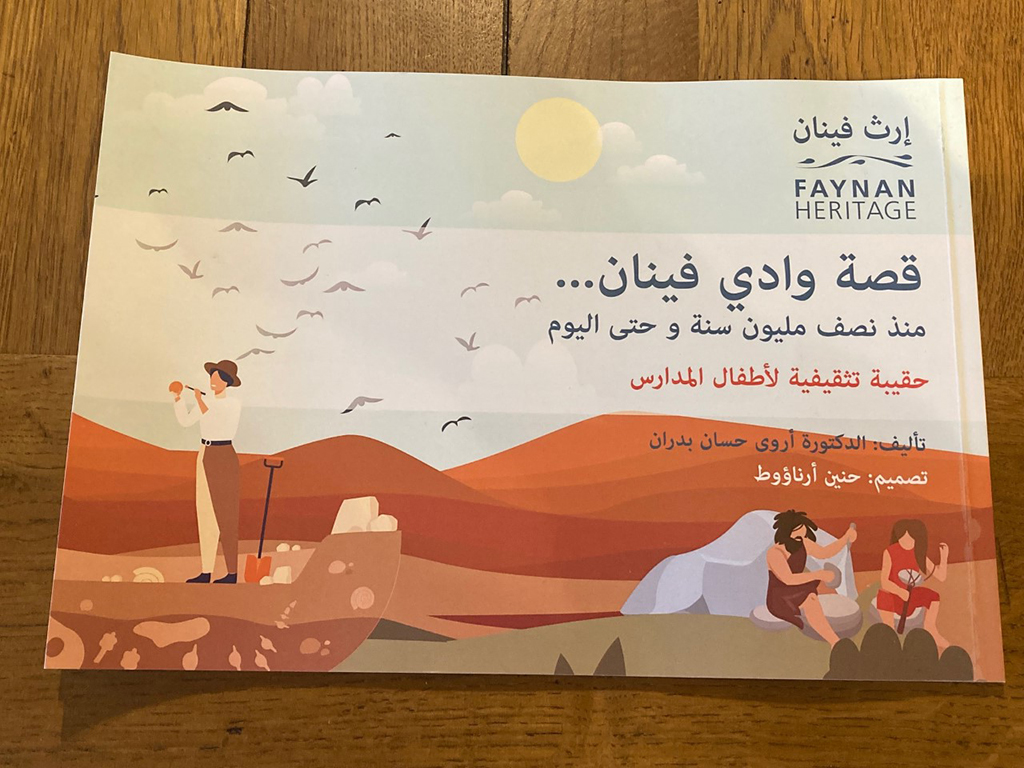
The cultural heritage book for children and as a resource in schools – Front cover

The cultural heritage book for children and as a resource in schools
Wall hanging
Dr Jessica Jacobs (QMC) and the artist Emily O’Mara worked with a group of Bedouin women to devise a wall hanging. The aim of this was to bring colour and local culture into the museum, and to provide a complementary way to view the Faynan landscape from the ‘scientific’ approach of the 3D model. A large textile has been produced, using a variety of both traditional and new techniques including weaving, embroidery, and felting, that captures a vision of Faynan from Bedouin eyes, tracking its changes through the year. This will be installed (if not installed already) on the sloping wall above the 3D model.
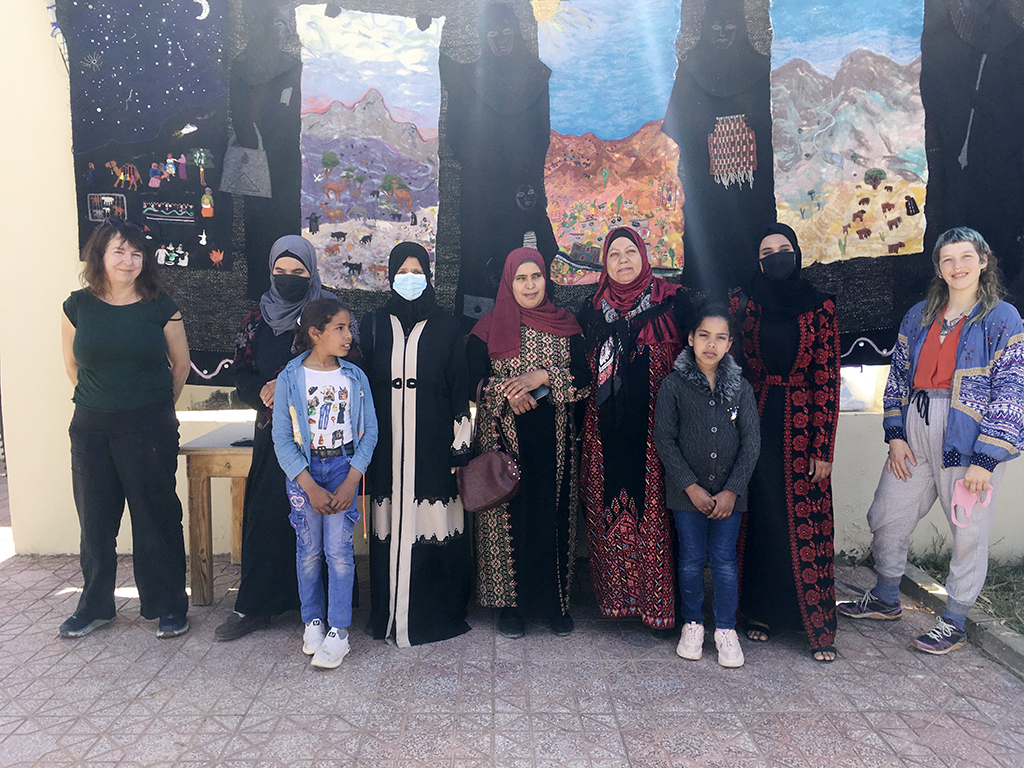
Jessica Jacobs (left) and Emily O’Mara (right) with some of the women who made the wall hanging
Faynan Heritage Trail
Steven Mithen and Elaine Jamieson (University of Reading) devised the Faynan Heritage Trail. This is a walking route around some of the most impressive archaeological sites in Faynan centred at the confluence of Wadi Dana and Wadi Ghwayr, including the monumental Khirbet Faynan, the Roman administrative centre, Roman field systems and aqueduct, Bronze Age art and Neolithic sites of WF16 and Ghwayr 1.
The sites had no previous markers so that visitors had no information about what they represented, their date and their role in the history of Faynan. Seven information boards were designed and then installed on stone-built cairns, providing a three hour walk, that could be either self-led or by a guide from the nearby Eco-Lodge or Wadi Ghwayr trekking camp. Maps for the Trail were installed at the Eco-Lodge, Trekking Camp and at the Museum. The cairns were constructed by SELA, using local materials, and providing training to local Bedouin. To complement the walking trail, information boards were also placed at more distant sites within the Wadi Dana Biosphere Reserve to create the ‘Faynan Heritage Trek’. These mark some of the most impressive archaeological sites form the Iron Age, Roman and Ottoman period, including deep copper mines, that can only be accessed with a guide.
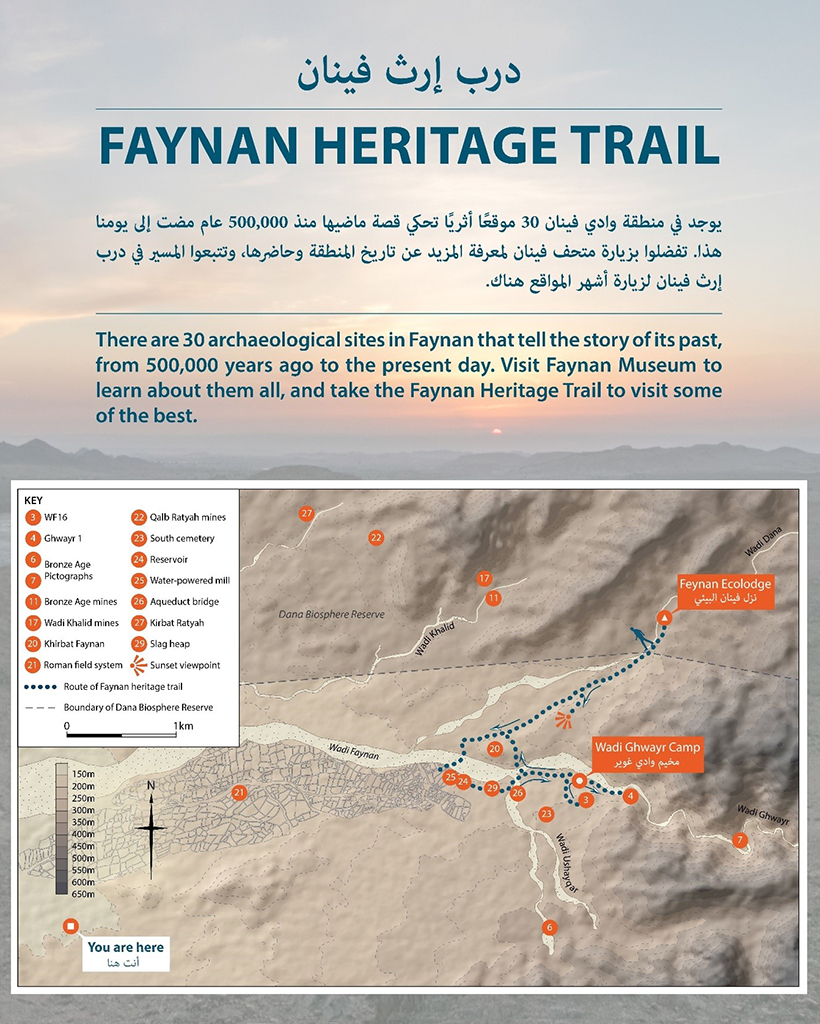
Faynan Heritage Trail
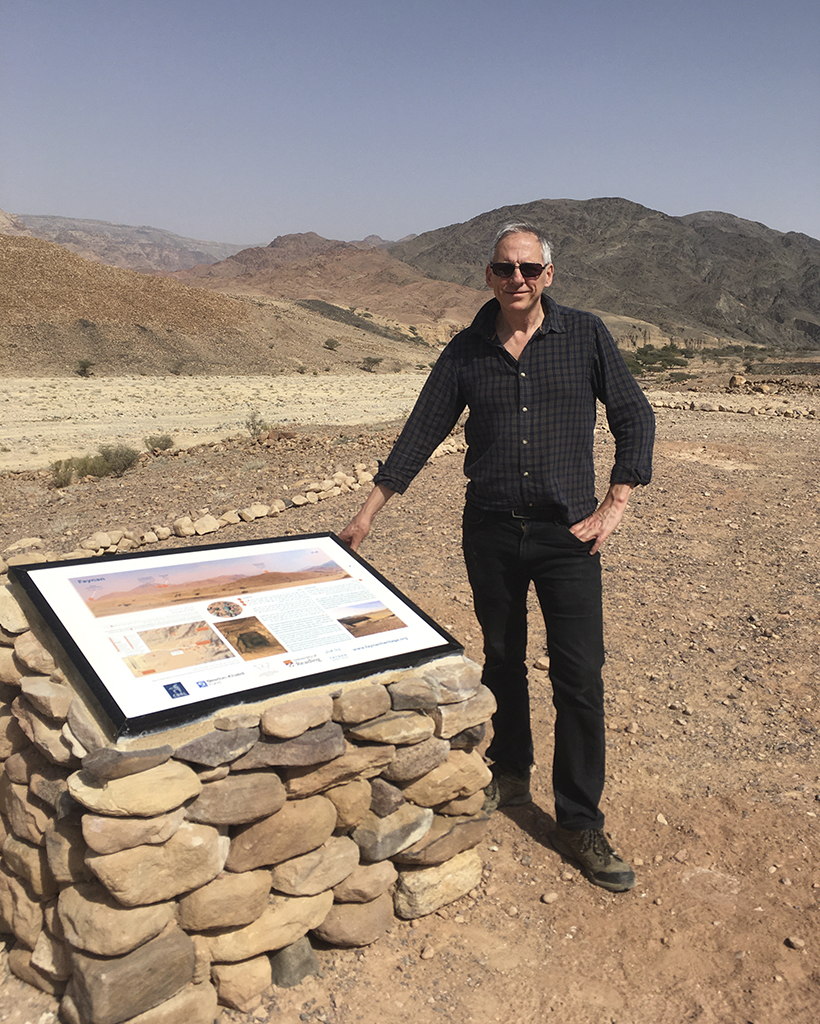
Steven Mithen with the first of the Faynan Heritage Trail boards
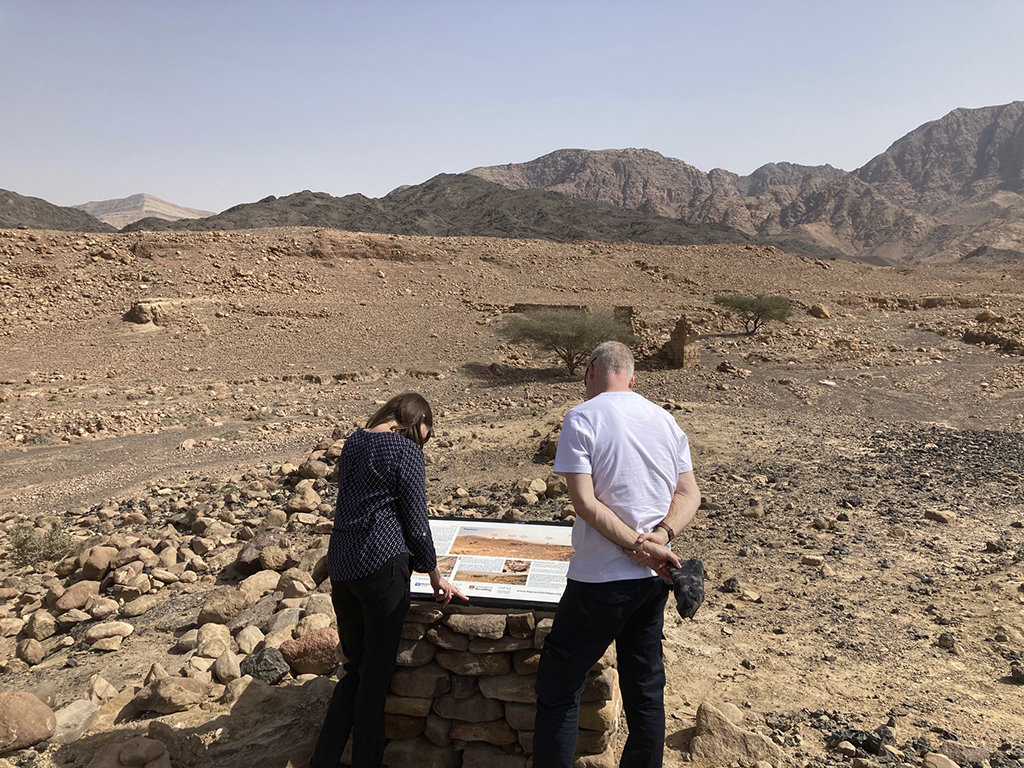
Tourists enjoying the Faynan Heritage board telling them about the ruins of the Roman aqueduct
Display cabinets, digital models and Faynan birds
With the funding from OPOF, the first display cabinets could be purchased for the museum. These were used to contain artefacts from the earliest Stone Age of Faynan and the Neolithic site of WF16. Cabinets were also purchased to contain artefacts from the Bronze Age and later periods but are still waiting to be filled by the DoA. A further display cabinet was purchased to display some of the bird bones excavated from WF16, a small exhibition installed, and a book about the birds of Faynan written by Steven Mithen and his colleagues on another AHRC funded project entitled ‘People & Birds in the Southern Levant’ (AH/P0075461) – the book can be found here. To enhance access to artefacts and archaeological sites in the landscape, several digital models were made by photogrammetry.
A vision for the museum
Dr Fatima Al-Nammari (University of Petra) and Dr Gehan Selim (University of Leeds), both architects, devised a vision for how the external area around Faynan Museum could be transformed into community hub. They worked with members local people and their university students to provide an interactive and engaging outdoor museum space that aims to enhance the informal cultural learning about the history and the cultural heritage of Faynan by including multiple social and entertaining activities.

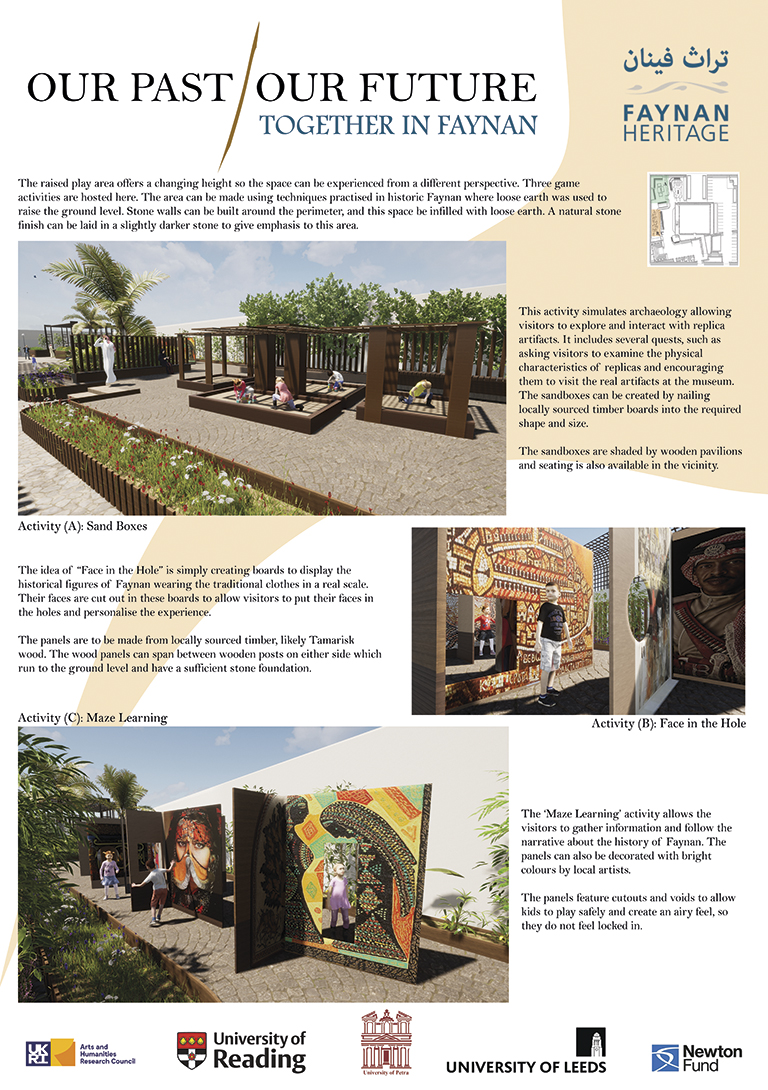

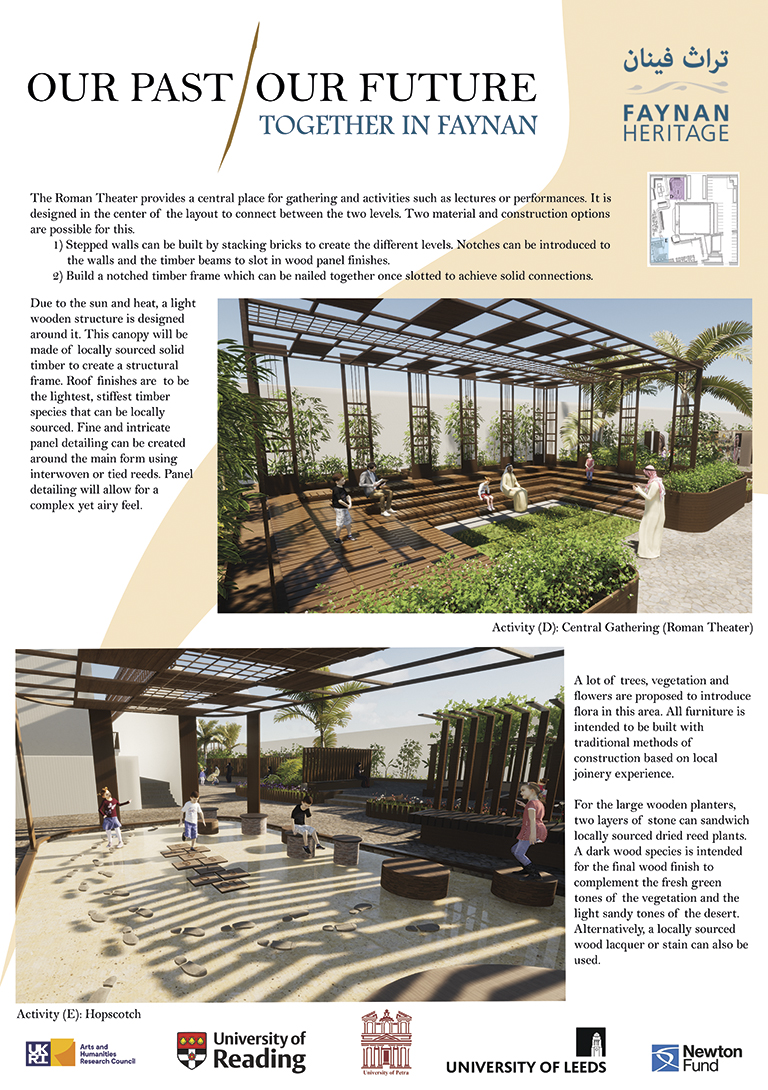
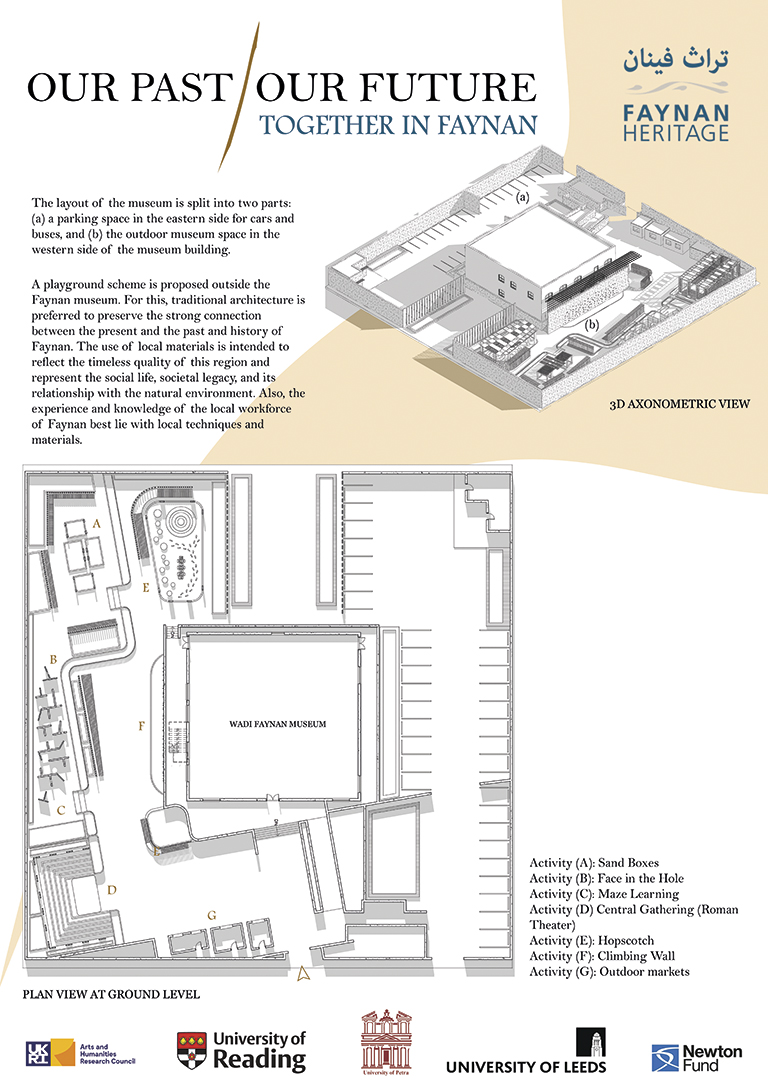
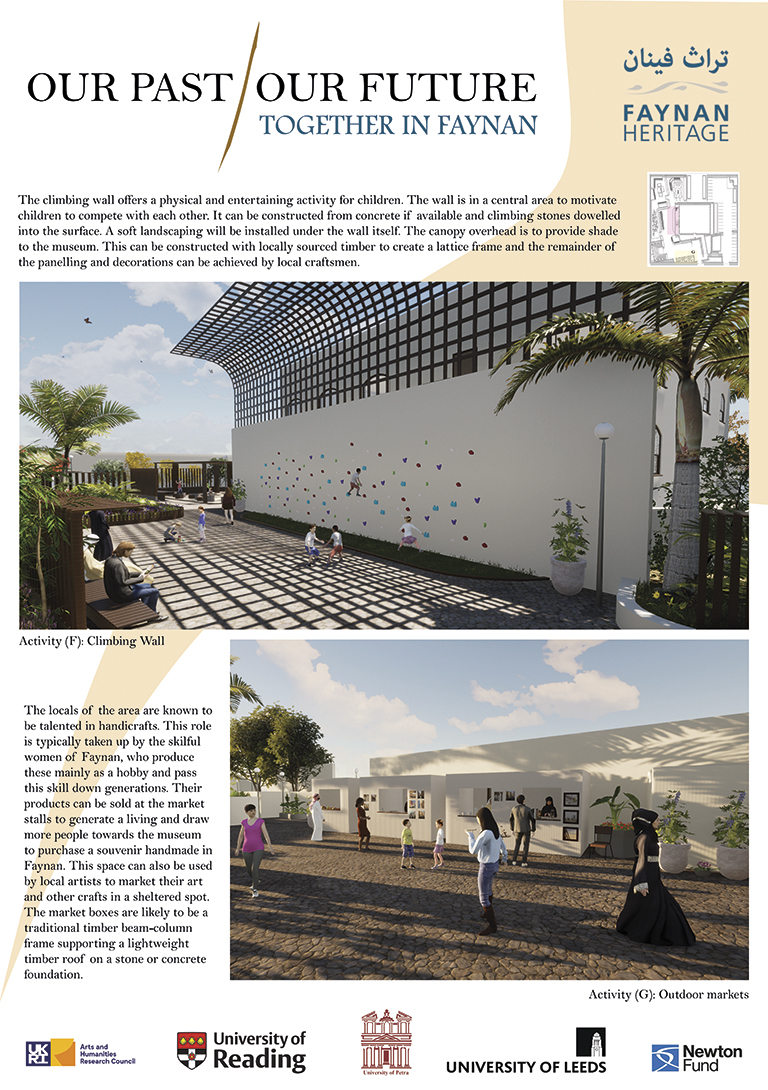
The second opening
On the 19 March 2022, Her Excellency Mrs Haifa Najjar, the Minister of Culture for Jordan and Mrs Bridgit Brind OBE, the British Ambassador or Jordan, visited Faynan Museum to view the work undertaken by the OPOF project. A presentation was made about the vision for the museum, leading to an invitation to meet with the Minister in Amman for a more formal presentation.
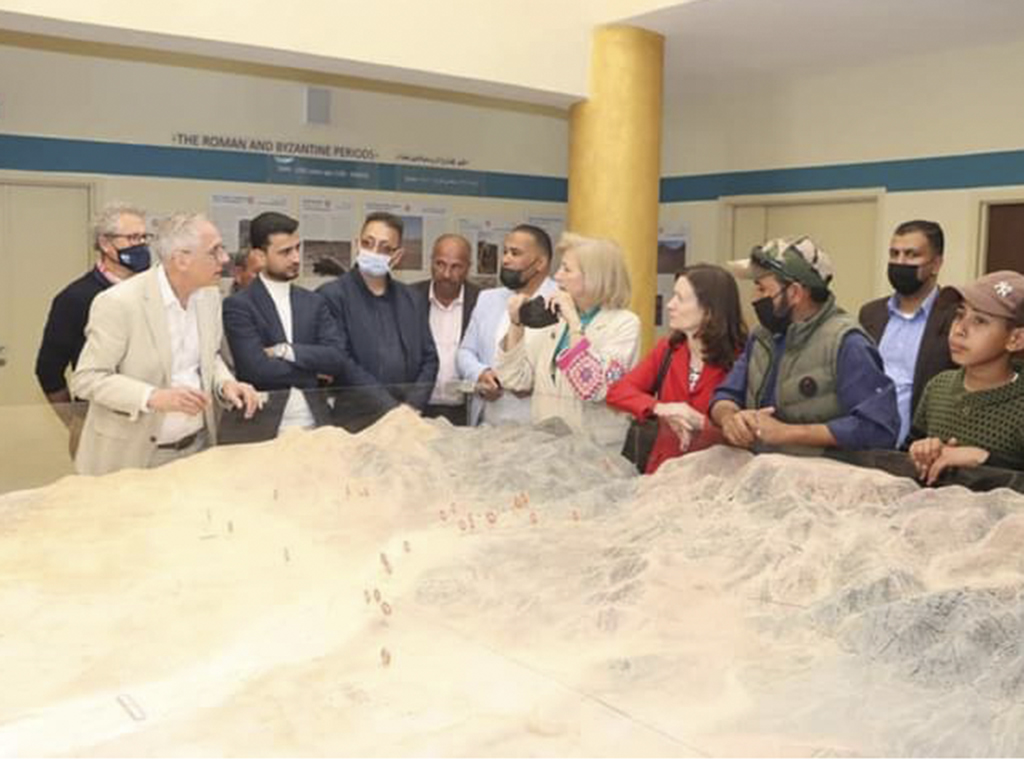

Steven Mithen with Her Excellency Mrs Haifa Najjar, the Minister of Culture for Jordan and Mrs Bridgit Brind, The British Ambassador (in red jacket)
